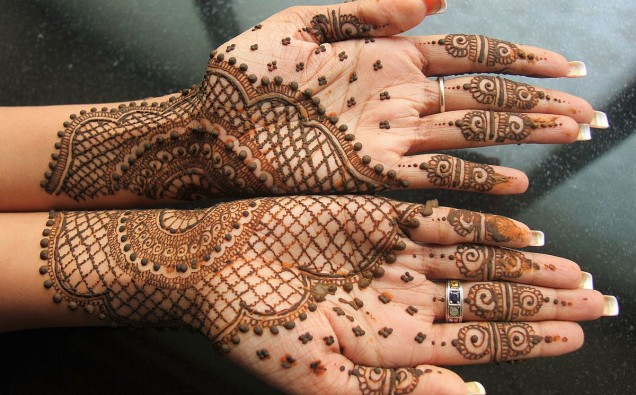Arabic Mehndi is very popular today, especially for brides. The trend of detailed Mehndi has gone for now, and Arabic Mehndi is back after many many years, with its big circles and flowers on the palm of your hands and detailed fingers leading up to the top of your arms, which makes you look and feel different from the normal bride.
Umroa Jaan is the perfect example of Arabic Mehndi, but have we ever thought about where Mehndi was originated from? And what does it signify? Henna has a long history of use in eastern cultures, particularly in the subcontinent, Arabia and North Africa, but why is Henna so popular today? Some would say that it is simply a fashion trend inspired by celebrities such as Madonna, Liv Tyler, Demi Moore and Prince. Seeing Madonna with henna tattoos on her hands in her video for ‘Frozen’ certainly gave henna more exposure to the media. It became a much talked about style of body decoration, and as a result interest in this traditional art form was ignited, spawning a great deal of promotion on television and in glossy magazines.
One cannot wholly attribute the popularity of henna to those celebrities alone. Henna is still used in eastern cultures and it was only probably a matter of time before these practices became more accessible in today’s multicultural society. Many popular designs of henna can be seen around the world in many different cultures. Though, one of the most popular types of henna is the Arabic henna design. As henna basically started in Arabic and Indian cultures, Arabic henna design is most probably one of the most extensively used henna body art in the Middle Eastern Countries of India, Egypt including Morocco and several other Places in the Middle East.
There are lots of reasons why these cultures make use of Arabic henna designs, but the most important reason consist of painting Arabic henna designs on their bodies because of ceremonial or religious practices. Also, in some types of the Arabic henna design, like in Egyptian societies, henna was painted on the feet and hands of a dead Pharaoh before the Pharaoh was actually mummified.
Today, however, Arabic henna designs have been twisted and changed to fulfill the needs of our culture. Also, the Arabic henna designs have been altered so that they no longer look like the flowing and original patterns that the Arabic cultures often patterned on themselves. Instead, Arabic designs now resemble face paintings or simple tattoos that one can get it easily anywhere from a carnival or a tattoo shop. Mehndi, which is a far more traditional name for henna, celebrates the hands as a miracle of creation and a vehicle of love. It focuses our attention on the sacred nature of the hand’s activities. Here instrument, in turn, becomes canvas. From the hand to the hand the henna flows a deep red into patterns of personal meaning, defined by and redefining traditions.





















